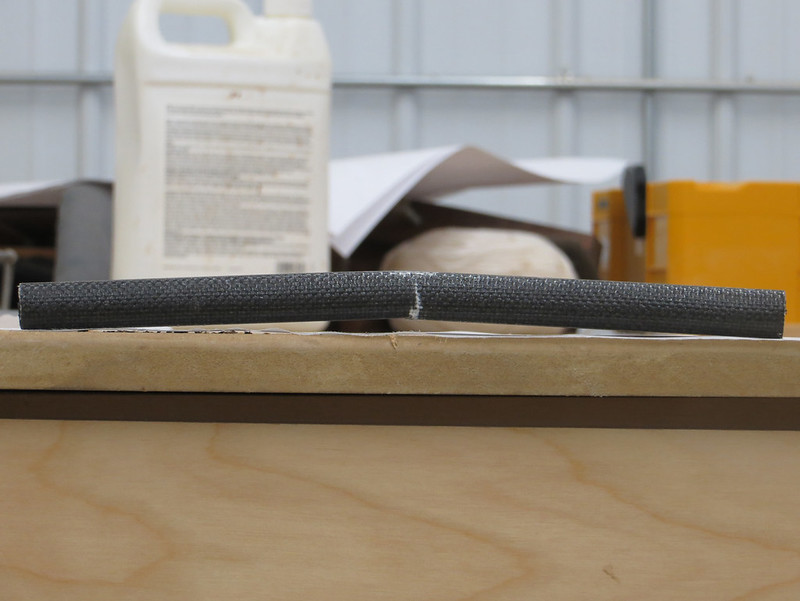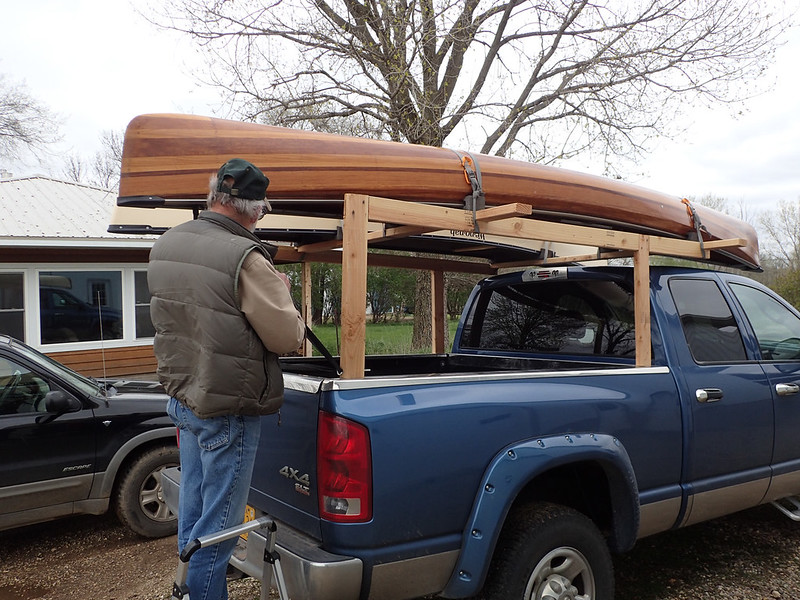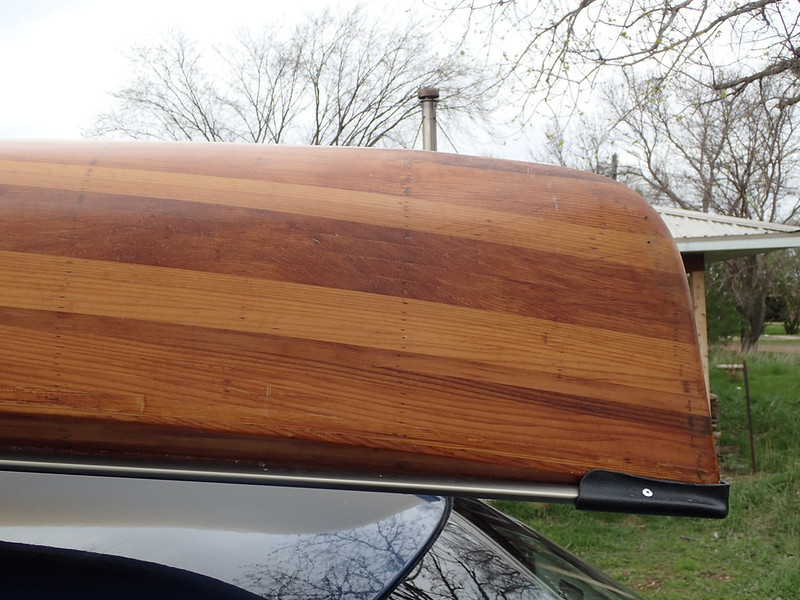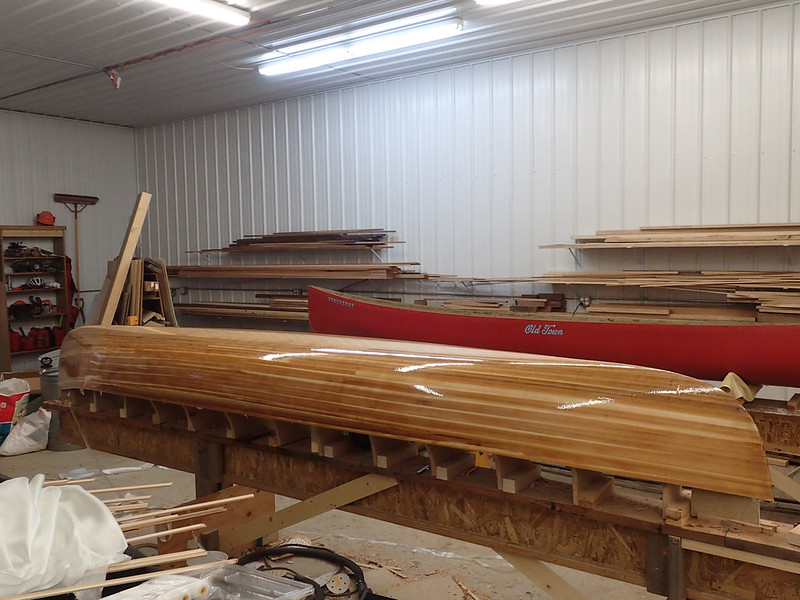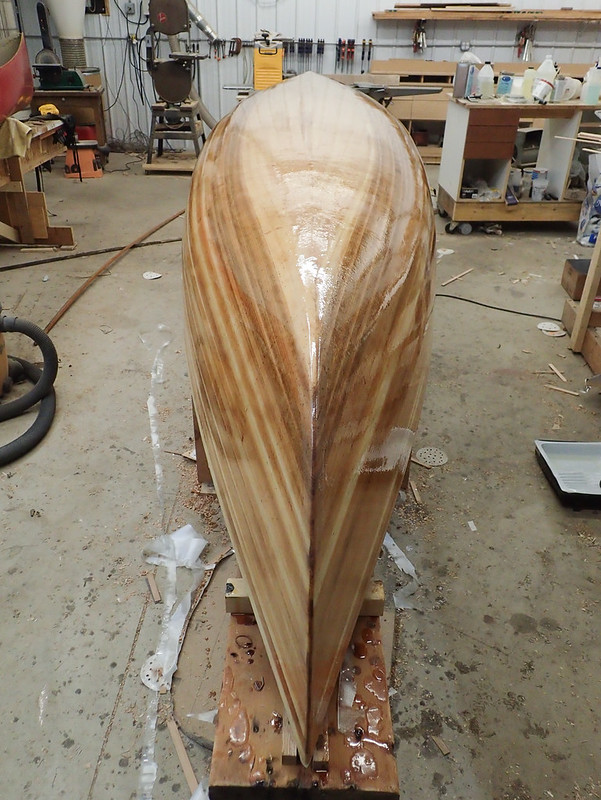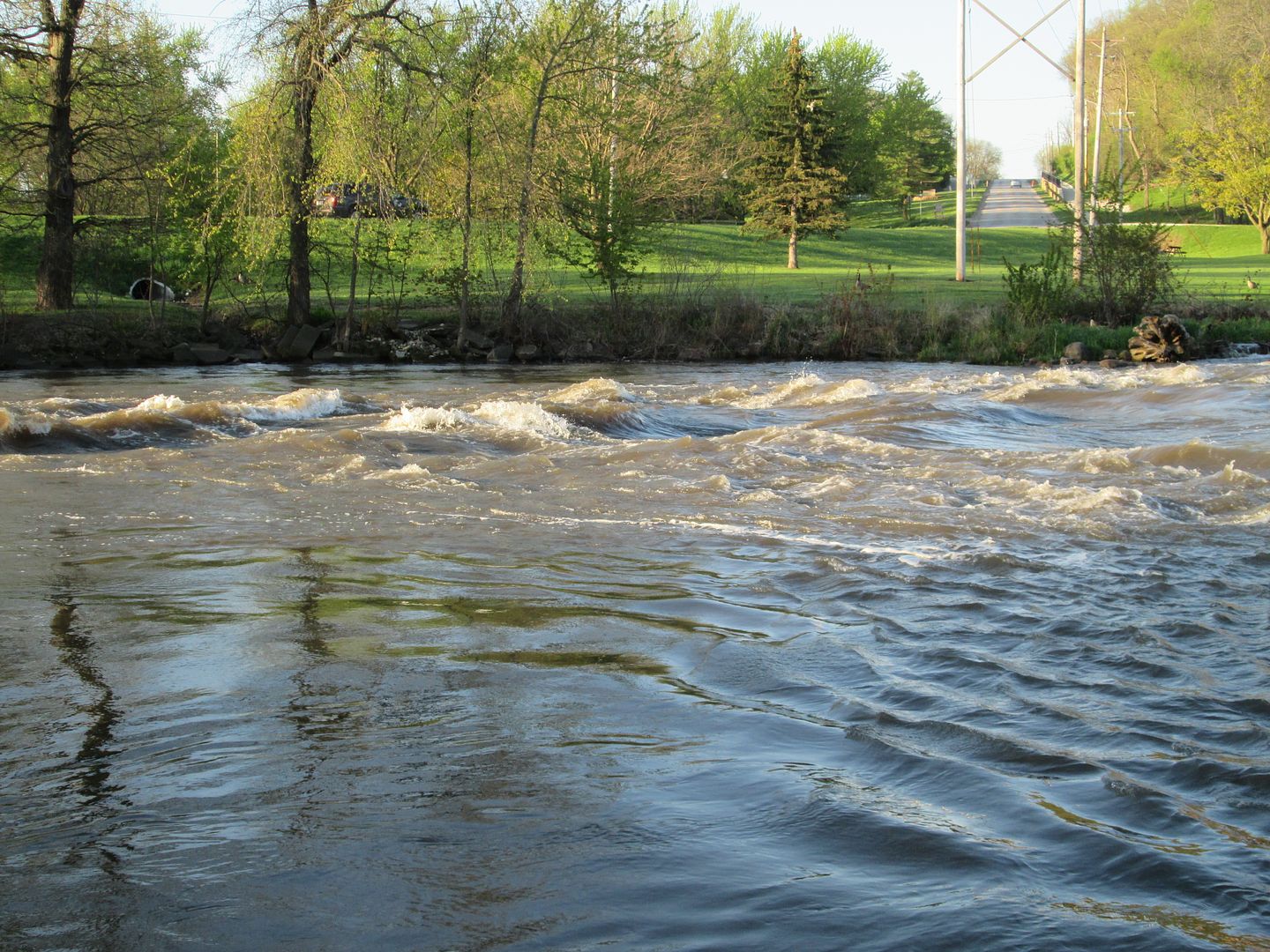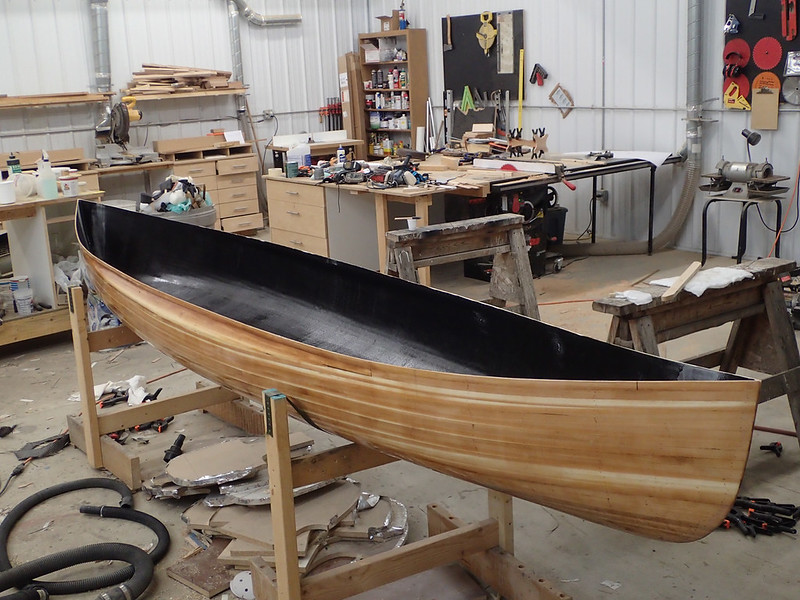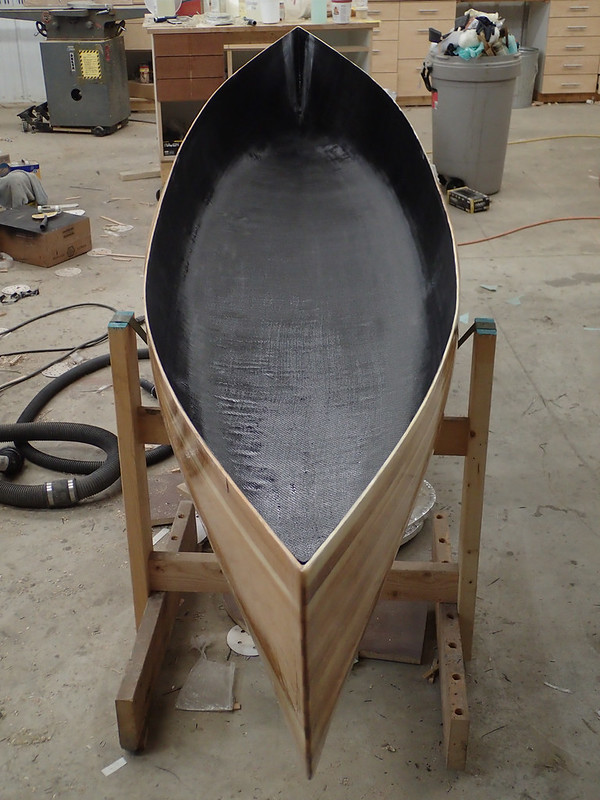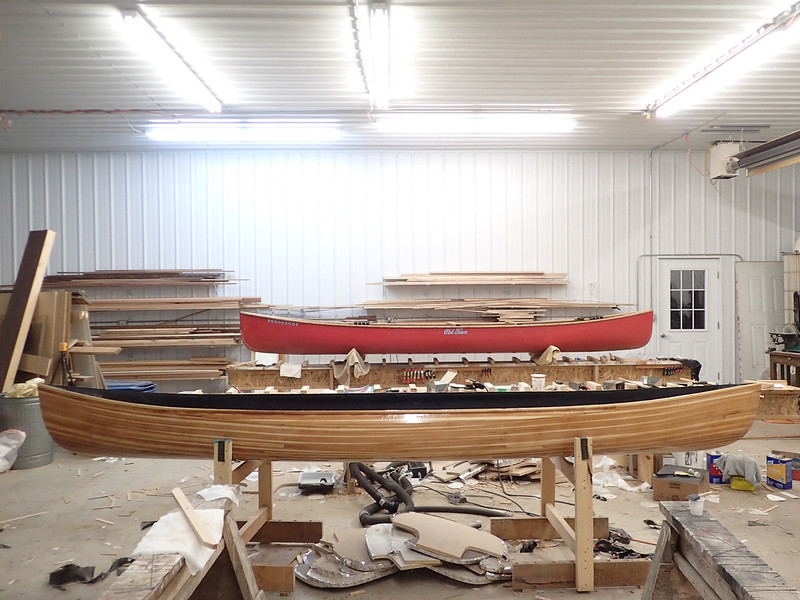I've been wanting something more maneuverable for moving water day trips so decided to build another canoe (imagine that). 14'x30" with something like 1.5" rocker and pretty soft stems. Fairly high volume carried to the stems to give Sadie more room and hopefully provide a drier ride in rapids. Symmetrical below the water line but higher sheer in the bow.
I'm not going to knock myself out trying to keep the weight down but I do have a 15' roll of carbon fiber laying around so I thought I'd use that on the outside and 4oz glass on the inside. Finished stripping the hull with 5/32" strips yesterday and this evening was spent sanding and coating with thickened epoxy to fill cracks and staple holes. In a few days I'll sand it down again in preparation for carbon.
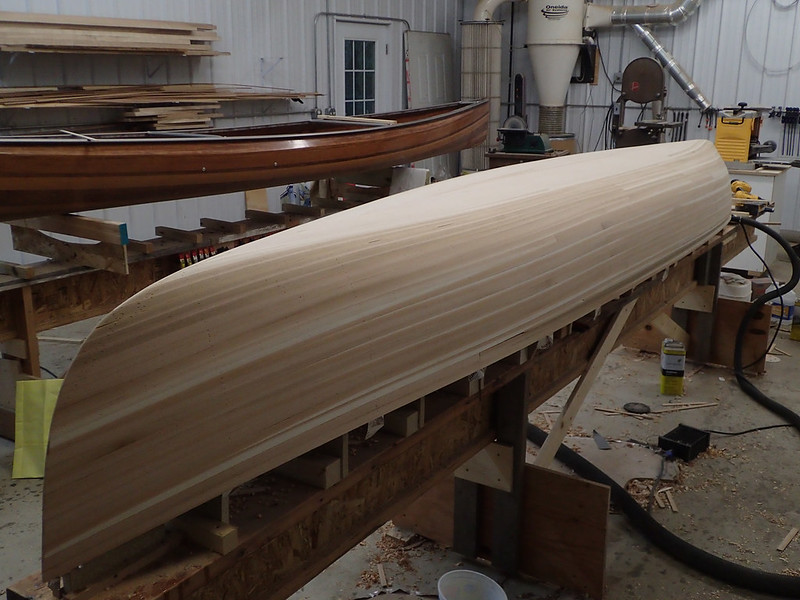 20170425_001 by Alan, on Flickr
20170425_001 by Alan, on Flickr
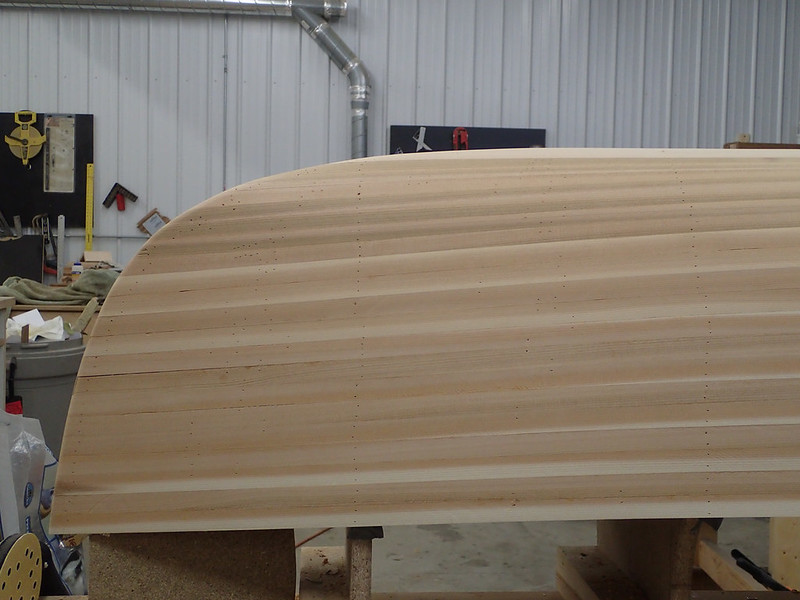 20170425_002 by Alan, on Flickr
20170425_002 by Alan, on Flickr
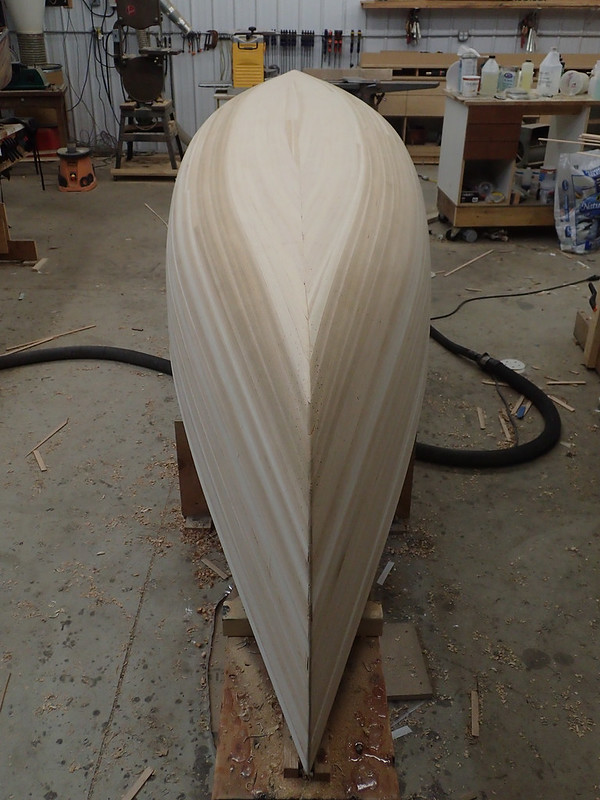 20170425_003 by Alan, on Flickr
20170425_003 by Alan, on Flickr
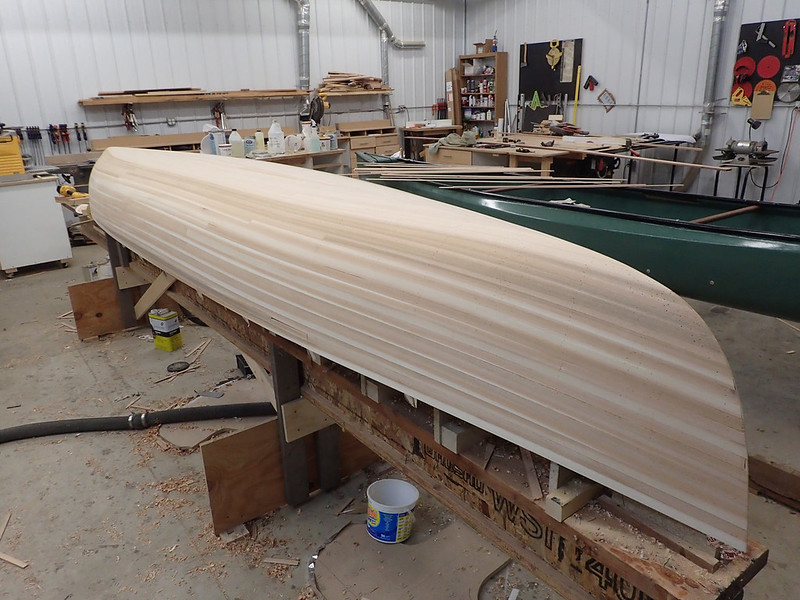 20170425_004 by Alan, on Flickr
20170425_004 by Alan, on Flickr
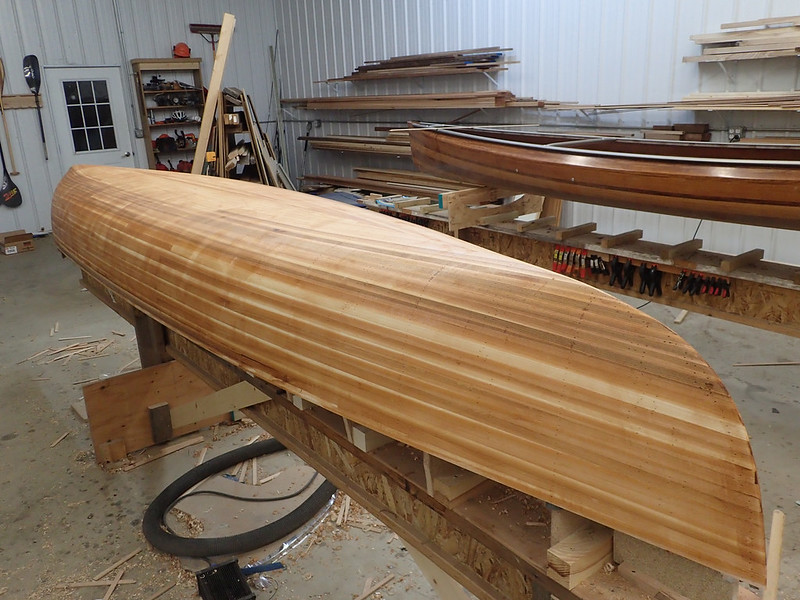 20170425_005 by Alan, on Flickr
20170425_005 by Alan, on Flickr
Alan
I'm not going to knock myself out trying to keep the weight down but I do have a 15' roll of carbon fiber laying around so I thought I'd use that on the outside and 4oz glass on the inside. Finished stripping the hull with 5/32" strips yesterday and this evening was spent sanding and coating with thickened epoxy to fill cracks and staple holes. In a few days I'll sand it down again in preparation for carbon.
 20170425_001 by Alan, on Flickr
20170425_001 by Alan, on Flickr 20170425_002 by Alan, on Flickr
20170425_002 by Alan, on Flickr 20170425_003 by Alan, on Flickr
20170425_003 by Alan, on Flickr 20170425_004 by Alan, on Flickr
20170425_004 by Alan, on Flickr 20170425_005 by Alan, on Flickr
20170425_005 by Alan, on FlickrAlan

